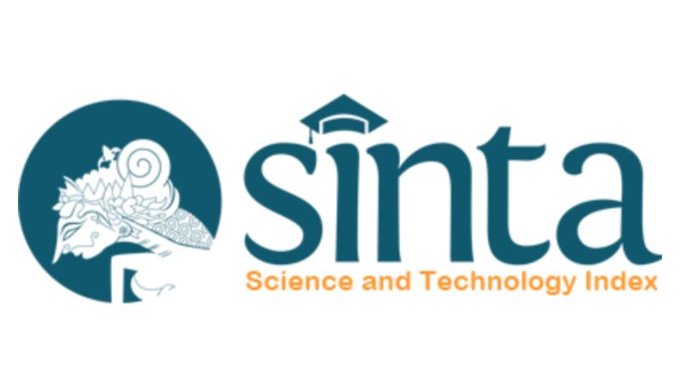Hubungan ASI Eksklusif dan Enuresis Primer pada Anak
DOI:
https://doi.org/10.55175/cdk.v47i6.630Keywords:
Anak, ASI eksklusif, enuresisAbstract
Enuresis adalah keluarnya air kemih yang tidak disadari dan berulang pada anak berusia 5 tahun atau lebih yang diharapkan sudah dapat mengendalikan proses berkemihnya. Istilah enuresis primer dipakai untuk anak yang belum pernah berhenti mengompol sejak bayi. Salah satu penyebab enuresis primer adalah keterlambatan maturasi sistem saraf pusat. ASI merupakan nutrisi yang ideal untuk bagi perkembangan sistem saraf. Pemberian ASI eksklusif menunjukkan manfaat besar dalam perkembangan visual, kognitif, dan neurologis anak, sehingga berperan dalam mencegah enuresis pada anak. Hal ini didukung oleh beberapa penelitian yang melaporkan hubungan antara pemberian ASI eksklusif dan enuresis pada anak.
Enuresis is repeated involuntary discharge of urine in children 5 years of age or older expected to be able to control the micturition. Primary enuresis is when children 5 years of age or older still bed-wetting. One of the causes of primary enuresis is delayed maturation of the central nervous system. Exclusive breastfeeding has beneficial effect in visual, cognitive, and neurological development in children; it may have a role in preventing enuresis. Several studies report the correlation between exclusive breastfeeding and enuresis prevention in children.
Downloads
References
Novita L, Gurnida DA, Garna H. Perbandingan fungsi kognitif bayi usia 6 bulan yang mendapat dan yang tidak mendapat ASI eksklusif. Sari Pediatri. 2008;9:429-34.
Fahriani R, Rohsiswatmo R, Hendarto A. Faktor yang memengaruhi pemberian ASI eksklusif pada bayi cukup bulan yang dilakukan inisiasi menyusu dini (IMD). Sari Pediatri. 2014;15:394-402.
Binns CB, Fraser ML, Lee AH, ScottJ. Defining exclusive breastfeeding in Australia. Paediatr Child Health. 2009;45:174-80.
Picciano MF. Nutrient composition of human milk. Pediatr Clin North Am. 2001;48:53-67.
Nesa M, Ardjana E. Enuresis. In: Soetjiningsih, Ranuh IGNG, editors. Tumbuh kembang anak. 2nd ed. Jakarta: EGC; 2012. p. 372-86.
Oliveira DM, Dahan P, Ferreira DF, Oliveira LF, Paula LIS, Figueiredo AA, et al. Association between exclusive maternalbreastfeeding during the first 4 monthsof life and primary enuresis. J Pediatr Urol. 2015;20:1-6.
Thiedke CC. Nocturnal enuresis. Am Fam Phys 2003;67:1499-506.
Austin PF, Bauer SB, Bower W, Chase J, Franco I, Hoebeke P, et al. The standardization of terminology of lower urinary tract function in children and adolescents: Update report from the Standardization Committee of International Children’s Continence Society. Neurourol Urodynamics. 2016;35:471–81.
Von Gontard A. Enuresis. In: Rey JM, ed. IACAPAP e-textbook of child and adolescent mental health. Geneva: International Association for Child and Adolescent Psychiatry and Allied Professions; 2012.
Robson LM. Current management of nocturnal enuresis. Curr Opin Urol. 2008;18:425-30.
Chiu WC, Liao HF, Chang PJ, Chen PC, Chen YC. Duration of breast feeding and risk of developmental delay in Taiwanese children: A nationwide birth cohort study. Paediatr Perinatal Epidemiol. 2011;25:519-27.
Ballard O, Morrow AL. Human milk composition: Nutrients and bioactive factors. Pediatr Clin N Am. 2013;60:49-74.
Sancak EB, Oguz U, Aykac A, Demirelli E, Bozkurt OF, Cimen S. The effect of breastfeeding on spontan resolution of monosymptomatic enuresis. Int Braz J Urol. 2016;42:550-7.
Pardo E, Dewey K. Nutrition and brain development in early life. Insight. 2012;1-14.
Fitzsimons E, Vera-Hernández M. Food for the Brain? Breastfeeding and Child Development. Fiscal Studies; 2013 .p.1-68.
Tasnim S. Effect of breast feeding on child development: At birth and beyond. SEA J Publ Health. 2014;4(1):4-8.
Dewey KG, Cohen RJ, Brown KH, Rivera LL. Effects of exclusive breastfeeding for four versus six months on maternal nutritional status and infant motor development: results of two randomized trials in Honduras. J Nutr. 2001;131:262–7.
Barone JG, Ramasamy R, Farkas A, Lerner E, Creenan E,Salmon D. Breastfeeding during infancy may protect againstbed-wetting during childhood. Pediatrics. 2005;118: 254-9.
Elder JS. Enuresis and voiding dysfunction. In: Kliegman RM, Stanton BF, St. Geme III JW, Schor NF, Behrman RE, editors. Nelson textbook of pediatrics 20th. Canada: Elsevier; 2016 .p. 2581-5.
Windiani IGAT, Soetjiningsih. Prevalensi dan faktor risiko enuresis pada anak taman kanak-kanak di kotamadya Denpasar. Sari Pediatri. 2008;10(3):151-7.
Downloads
Published
How to Cite
Issue
Section
License
Copyright (c) 2020 Cermin Dunia Kedokteran

This work is licensed under a Creative Commons Attribution-NonCommercial 4.0 International License.





















